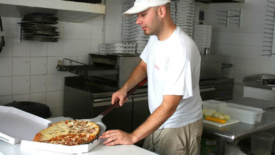Home » packaging
Articles Tagged with ''packaging''
Ensuring the Safety and Quality of RTE Meals for U.S. Service Members
Many RTE food technologies were created and first commercialized by the U.S. Armed Forces
December 11, 2022
BIZTRACKS
Varcode, National Packaging Group Develop Smart Packaging Solutions for Temperature-Sensitive Products
September 21, 2022
Never miss the latest news and trends driving the food safety industry
eNewsletter | Website | eMagazine
JOIN TODAY!Copyright ©2024. All Rights Reserved BNP Media.
Design, CMS, Hosting & Web Development :: ePublishing










